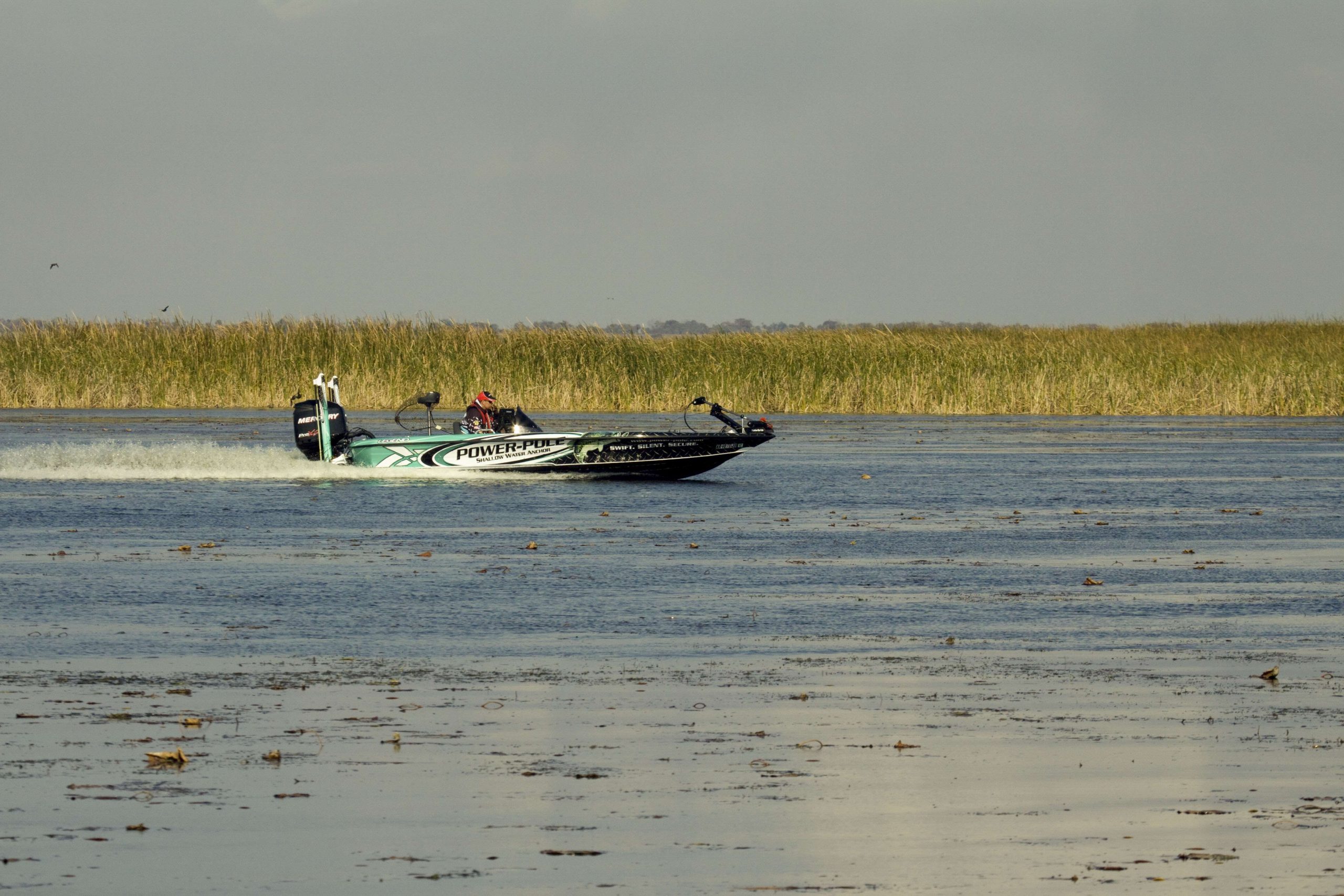
CLEWISTON, Fla. – Rivers and canals are coated in a toxic film of bright green. Coastal beaches and shallows are awash in mounds of hairlike slime and dead fish. Satellite photos of Lake Okeechobee are ablaze with reds and yellows, indicating a massive algae bloom across the fishery’s open waters.
This isn’t the first year that this has happened. But the visuals have been especially graphic, an ugly reminder of how we have damaged Florida’s vast, interconnected freshwater system and possibly a warning that we are but one tropical storm away from environmental disaster.
In response, Gov. Rick Scott issued an emergency order on July 9.
“As Governor, it is my duty to protect Floridians, no matter what it takes. Today, our state is once again facing a crisis from water releases controlled by the U.S. Army Corps of Engineers,” he said. “This has prompted me to issue an emergency declaration, so our state agencies can do everything in their power to minimize the harmful impacts these releases are having on our communities.”
Additionally the White House Office of Management and Budget voiced its support for a massive storage reservoir south of the lake to help mitigate the recurring problem, as well as help restore flow to the Everglades, also damaged by the well-intended, but ill-advised replumbing of years past. It’s now up to the U.S. Senate to include money for the $1.6 billion Everglades Agricultural Area Reservoir in the 2018 Water Resources Development Act.
“This must happen in 2108 if we expect real progress to be made and avoid a costly two-year delay before construction can begin,” said Keep America Fishing, in issuing an action alert for anglers to contact their senators in support of the reservoir.
“In conjunction with other projects, the reservoir is expected to reduce damaging, algae-causing discharges that inundate the communities along the Caloosahatchee and St. Lucie estuaries by approximately 60 percent once completed,” it added. “It will also help send an additional 370,000 acre-feet of clean, freshwater south towards the Everglades and Florida Bay each year.”
The reservoir has been a priority for Florida Senate President Joe Negron, who is retiring in November. “This is an emergency,” he said. “Time is of the essence.”
The problem
How did we get to this place?
We built canals and drained portions of the Everglades for development and agriculture. We turned our nation’s second largest lake into an impoundment for similar reasons, as well as to protect nearby communities from flooding.
After we eliminated Okeechobee’s natural ability to flush and cleanse itself, while replenishing the Everglades, we changed the lake’s main’s source of water, the Kissimmee River, from a 100-mile meandering river with 43,000 acres of nutrient-filtering wetlands into a 50-mile channel.
With the Big O’s natural drainage eliminated, something had to be done to control water levels. The Corps built locks to discharge water east and west, into the St. Lucie and Caloosahatchee Rivers.
And all the while this was going on, agricultural runoff along the Kissimmee and around the lake poured in, fueling algae blooms and accumulating on the bottom as organic muck.
Fortunately, Okeechobee’s world-class bass fishery hasn’t been seriously impacted – yet. Bulrush and other aquatic vegetation serve as a protective barrier for the productive backwaters. “The bass fishing is great. People are catching lots of fish,” Ramon Iglesias, general manager of the Roland Martin Marine Center, reported recently.
But Florida Fish and Wildlife Conservation Commission biologists have warned that water held high by the Corps to prevent flooding and excessive algae, which reduces light penetration, could diminish that valuable vegetation, and we may be only a tropical storm away from a tipping point where habitat is destroyed and serious impacts to the fishery are going to show up. Some anglers also think that they seen a decline in the fishery.
Meanwhile, during summer and fall, those nutrient-rich discharges from the Big O often have combined with urban runoff and septic tank leakage to the east and west to smother coastal areas in “guacamole thick” algae, some of which is toxic.
The good news is that restoration began on the Kissimmee River in 1999, putting twists and turns back into the waterway and restoring wetlands. That has cut down on nutrients pouring into the lake and allowed for more water storage above it.
But in a 2015 report, the South Florida Water Management District revealed that 37 percent of the algae-feeding phosphorus pouring into Okeechobee comes from farms, groves, ranches and neighborhoods as far north as the Orlando suburbs. Just 5 to 8 percent comes from sugar fields, farms, and towns around the lake.
“Ninety-five percent of the water flowing into Lake Okeechobee comes from the Kissimmee,” Iglesias said.
While a reservoir to the south will help, he added, much more needs to be done in the watershed to the north, including recovery wells to store water.
But even that won’t solve the problem in the short term, according to Karl Havens, Florida Sea Grant Director. “In the watershed north of Lake Okeechobee, it is estimated that the soils and wetlands contain enough nutrients from past agricultural activities to fuel high nitrogen and phosphorus inputs into Lake Okeechobee for the next 50 years, even if farming stopped today,” he said.
Still, building a reservoir south of Lake Okeechobee will be a huge step in the right direction, according to resource managers, as it will provide relief from nutrient overload to east and west estuaries and direct much needed water to a thirsty Everglades.





